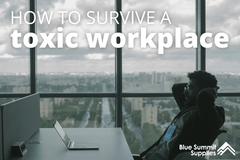What is sensitivity training in the workplace? Sensitivity training is provided by an employer to get all staff on the same page about acceptable actions and word choices in the workplace. Any level of racism, sexism, homophobia, transphobia, or ageism cannot be tolerated in a workplace. Sensitivity training addresses any issues your workplace may be suffering from in regards to marginalization, and it can also address smaller microaggressions that may not be apparent to every member of the team.
It’s a business’s responsibility to ensure all of its employees, customers, and clients feel welcome, safe, and respected. This post will dig into a complicated and sensitive topic, but a topic that’s vitally important to discuss. We’ll go over what microaggressions are, provide microaggression examples, and share sensitivity training options that will help in addressing microaggressions in the workplace.

Microaggressions at Work
A microaggression is “a statement, action, or incident regarded as an instance of indirect, subtle, or unintentional discrimination against members of a marginalized group such as a racial or ethnic minority.”
In other words, a microaggression is a term used to describe everyday verbal, behavioral, or environmental insults that, whether intentionally or not, communicate negative, derogatory, or downright hostile attitudes toward culturally marginalized or stigmatized groups. Oftentimes, the perpetrator of a microaggression has no idea they are being offensive, which makes issues involving microaggressions difficult to bring up or resolve.
Because of this, it’s easy for the majority to dismiss a microaggression as a simple slip of the tongue. Half-hearted apologies like “You know I didn’t mean it like that,” or, “it was just a joke,” are quite common for those who feel marginalized at work to hear.
But just because microaggressions are subtle or unintentional does not make them okay. Marginalization in the workplace in any form is completely unacceptable.
This is why sensitivity training is vital to every workplace.
Examples of Microaggressions at Work
Microaggressions can be well-intentioned, but that doesn’t make them any less hurtful. It’s important to keep a completely open mind when it comes to what might be offensive, hurtful, or insensitive to someone else you work with. You have absolutely no way of knowing what they or their family has been through—and you don’t need to know. However, you do need to be sensitive to microaggressions, even if they may not be initially apparent to you.
So, what does a microaggression look like? Next, we’ll share some types of microaggressions at work that you may or may not have witnessed or experienced before. This is by no means a complete list; it only serves to shed light on some common microaggressions.

People’s Hair
How we address and speak about people’s hair is fraught with cultural insensitivity and often blatant racism. People of color, especially women, have dealt with racist comments, actions, societal norms, and policies surrounding their hair for years—and that fight isn’t over.
Judging someone's hair or forcing them to wear their hair a certain way to conform to what the majority of people consider ‘normal’ is racist in itself, but there are subtleties to the situation that take the form of common microaggressions.
While you may think you are appreciating a person of color’s hair by asking to touch it, you are actually pointing out how different it is. You are reminding that person of a long line of uncomfortable feelings and negativity due to years of racist standards and cultural insensitivity.
The workplace is not the right environment to learn about a colleague's hair, no matter how well-intentioned the question or comment may be. Do this research on your own time and not at the expense of your team members’ feelings and comfort in the workplace.

People’s Names
Mispronouncing someone’s name isn’t problematic in itself, but it is highly insensitive not to learn how to say someone’s name correctly. Let’s be clear—making a mistake and apologizing is okay once, but it’s unacceptable to continue mispronouncing a name you consider foreign.
So, where do microaggressions come in? Laughing off a mistake, even at your own expense, points out that you think the other person has a strange name. If you do get it wrong, make sure you apologize sincerely.
Microaggressions can also pop up if you continually try to avoid saying a non-Western-sounding name so that you don't mispronounce it. You might be avoiding a mistake or awkward conversation, but the consequence is that you never address that person by their real name. This can lead people without Western-sounding names to feel unacknowledged and unseen in the workplace.
Do all that you can to learn how to say someone’s name correctly in advance. Google is just a click away; use it to figure out how to say commonly mispronounced names. When in doubt, ask privately (if possible) for clarification on the correct pronunciation, and lock that into your vocabulary. If you can learn the names of the houses in Game of Thrones, you can certainly put in the effort to memorize the names of your teammates and clients.

People’s Background
You may think that asking someone you work with where they are from or where they are from “originally” shows you are taking an interest in them or making small talk, but this is a microaggression. It can hurt the other person or, at the very least, make them feel uncomfortable.
By asking this question, you are pointing out that based on their name, appearance, or accent, you believe they aren’t from “here.” They are other from you, and therefore, that makes them strange in your eyes. Your coworker may feel comfortable bringing up where they or their family is from, but it is not appropriate for you to ask. In some cases, it may even come across as blatantly racist if you are asking the question based on the person’s skin color alone.
Skin color is not an indicator of where someone is from, especially in the 21st century. A colleague who looks just like you may be from halfway across the world, while at the same time, a person of color may have five generations of family who have spent those years living in the exact same city as you.
Sensitivity Training in the Workplace

Team Diversity and Sensitivity Training
The most common diversity sensitivity training is company-wide. It brings all teammates, no matter their rank, together to learn the importance of sensitivity in the workplace. For this type of training to work, it is critical that everyone participates, from new hires to CEOs.
Training of all types is a team building opportunity and, in this case, a direct investment in the safety and wellbeing of your team. Plan this training with plenty of advance notice to ensure everyone can make it. Ensure you are clear about the importance and seriousness of this training so that each team member arrives understanding the intention of the training.

Sensitivity Training for Managers
Some sensitivity training classes are geared directly toward managers. This type of training does not replace company-wide sensitivity training, but it can offer additional tailored training for senior staff and managers.
Direct manager training can provide microaggression at work examples to watch out for amongst your team, as well as how to best handle issues if they do arise. What’s the best way to approach the subject? How do you de-escalate a situation while ensuring all parties feel heard and comfortable in the workplace? What constitutes a punishable offense for insensitivity in the workplace?

An In-House Sensitivity Trainer
Depending on the size of your workplace and the type of work your company performs, you may need a more involved option. An in-house sensitivity trainer or manager can work alongside your team to ensure all types of marginalization are prevented inside and outside of the workplace.
This may be the ideal option for businesses that work directly with marginalized groups. A person dedicated to sensitivity can prevent any potential biases, inequities, and insensitivities from entering your products, services, publications, word choices, social media posts, etc.

Online Sensitivity Training for Remote Teams
Let’s not forget about our remote work and hybrid teams. Microaggressions can appear just as easily through online communication, which means cultural sensitivity training is just as essential for remote teams.
All of the same strategies apply. You must make sure the team has plenty of notice to ensure everyone is available to participate. Be clear about the expectations and importance of the training. This might be a good time to brush up on your virtual meeting etiquette and online meeting rules.
More From Blue Summit Supplies
💡Discrimination at Work: Signs You Need a Workplace Discrimination Attorney
💡 Ageism at Work: Managing Generational Differences in the Workplace
💡 How to Handle Intimidation at Work
Our office blog is dedicated to workplace wellness and wellbeing. Follow Blue Summit Supplies for the latest manager advice, industry trends, office strategies, and more.
If you have any questions or want to talk to someone about office supplies, send us an email or connect with us on Twitter, Facebook, or Instagram.
 For more informative articles about office supplies, subscribe to our email newsletter!
For more informative articles about office supplies, subscribe to our email newsletter!
Never fear, you won't begin receiving daily sales emails that belong in a spam folder. Instead, we promise a fun weekly roundup of our latest blog posts and great finds from across the web. And if you lose interest, it's always easy to unsubscribe with a single click.









